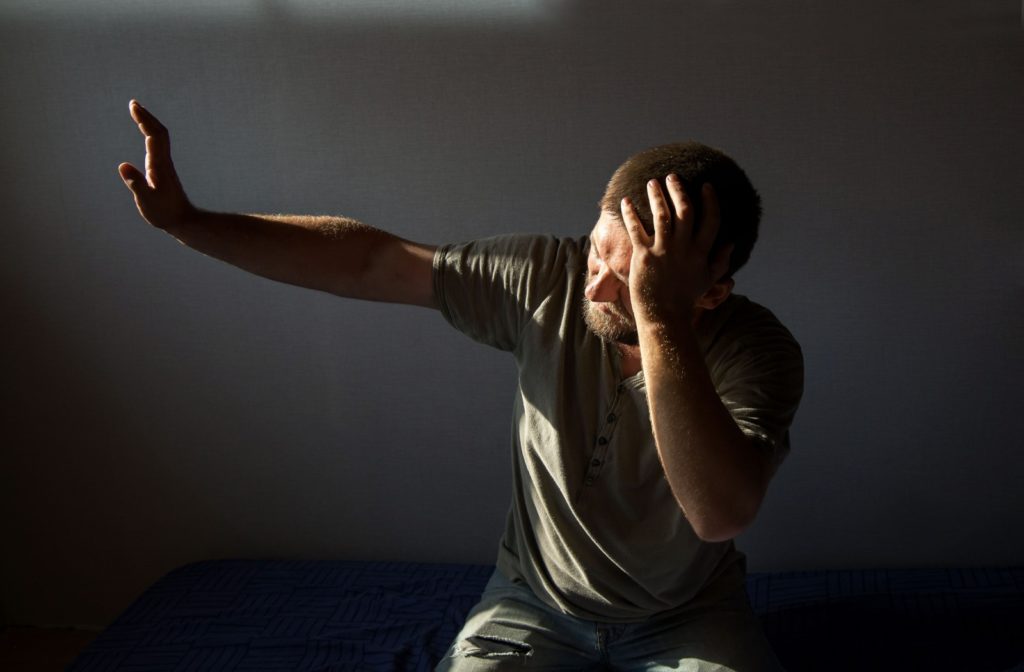Squinting in sunlight, recoiling from sudden flashes, or wincing at the glare of a too-bright screen—we’ve all had moments when light feels like too much. For those who deal with chronic light sensitivity, these moments aren’t occasional annoyances; they’re daily challenges. Fortunately, it’s typically possible to fix light-sensitive eyes in various ways, such as adjusting the light in your environment, wearing protective eyewear, or fixing the underlying cause.
While wearing sunglasses may be effective for occasional light sensitivity, discussing your symptoms with your eye doctor may be beneficial. After examining your eyes, they may be able to determine a root cause for your light sensitivity and offer an effective treatment plan.
Understanding Light Sensitivity
Imagine a world where every light beam feels like a neon sign straight into your brain. This discomfort is a reality for many living with light-sensitive eyes or photophobia. This condition can be temporary and occasional or the result of an ongoing medical condition.
Causes of Light Sensitivity
Certain eye conditions can make you more susceptible to photophobia. Although there are too many causes to list, they can include:
- Corneal abrasion: A scratch or injury on the cornea can be painful and light aggravating.
- Iritis: An inflammation that can intensify light discomfort.
- Migraines: This headache disorder can be associated with sensitivity to light.
- Dry eye syndrome: A common condition where your eyes don’t produce enough tears, or they produce low-quality tears.
- Post-concussion syndrome: Sensitive eyes can be a symptom of a traumatic brain injury.
Symptoms & Impact on Daily Life
The list of symptoms of light sensitivity is as varied as its causes. For some, it might mean frequent headaches, and others can have a continuous need to shield their eyes even indoors. The impact can range from mild irritation to severe headaches and problems with vision. Daylight and artificial light can both cause photophobia symptoms, so coping with these sensitivities can be an around-the-clock battle.
Management Strategies
Dealing with light sensitivity is often about management rather than outright cure. Here are various strategies that can improve your quality of life:
Adjusting Lighting Environments & Wearing Protective Eyewear
Start with easy wins. If you’re indoors, dimming the lights or drawing the blinds in your workspace can create a more comfortable environment. Avoid fluorescent lights if possible, and consider using lamps with soft, warm-toned bulbs. UV-protective sunglasses or a wide-brimmed hat might become your new best friends for outdoor activities.
Fix the Underlying Cause
Your eye doctor may be able to determine the underlying cause of your symptoms. For example, if they determine that a cornea injury or dry eye is causing your light-sensitive eyes, the best course of action will typically be treating that condition.
Improving general health can also lead to less severe symptoms. Regular sleep patterns, a balanced diet, and stress management can all play a part. For those with chronic migraines, staying hydrated and tracking your triggers may also help reduce the severity of light sensitivity.

Importance of Consulting an Eye Care Professional
Your first step in addressing persistent photophobia symptoms should be a visit to your eye doctor. They can conduct a comprehensive eye exam, including tests for potential underlying conditions. It’s important to rule out serious health issues and to get an accurate diagnosis for tailored treatment.
Diagnosis & Treatment Options
Diagnosis may involve eye tests looking at how your pupils react to light. However, your eye doctor might need to perform additional tests in some cases, especially if an underlying condition is suspected. The treatment plan could involve:
- Addressing the underlying cause, such as inflammation or infection—this could be as simple as lubricating eye drops or even antibiotic or anti-inflammatory eye drops
- Prescription medications to help manage severe symptoms, like in the case of migraines
Long-Term Strategies for Managing Light Sensitivity
Adapting to life with photophobia may require a strategic, long-term approach. Even though you can’t necessarily prevent light sensitivity, environmental modifications, stress management, and using appropriate eyewear can all help to minimize your risk and reduce the symptoms. Additionally, keeping an eye on new treatment developments through regular check-ins with your eye doctor can ensure you make the most of the available options.
Find Symptom Relief Today
If you find yourself wincing from light more often than not, don’t just tough it out. Seek solutions that will bring lasting relief. We’ve unpacked some options, from lifestyle adjustments to cutting-edge eyewear, designed to help you thrive in a world that seems to shine too brightly for your liking. But that doesn’t replace a trip to see your optometrist.
Give us a call at Total Vision Solana Beach today to book an eye exam. One of our eye doctors can examine your eyes, discuss your symptoms, and offer a tailored treatment plan to get you seeing clearly regardless of how bright the sun shines.



